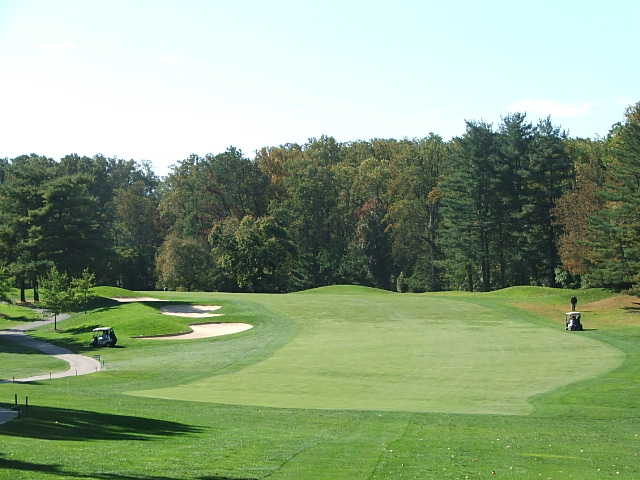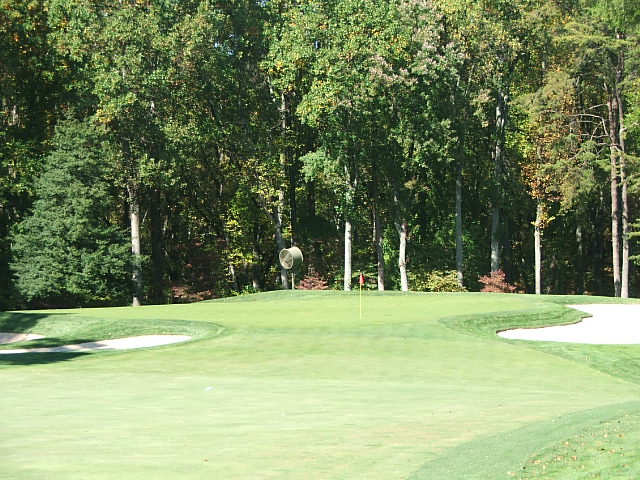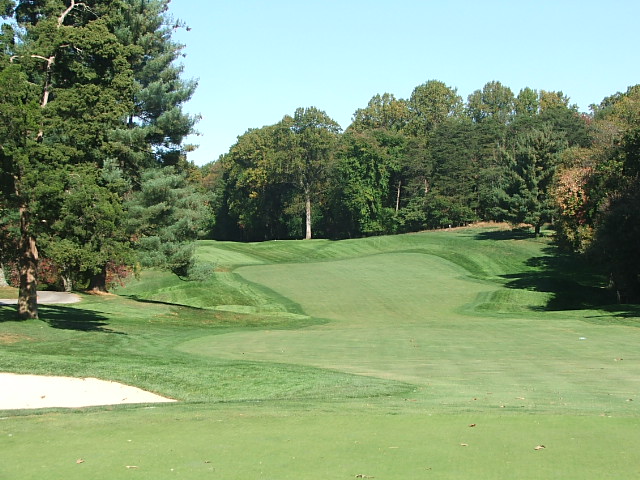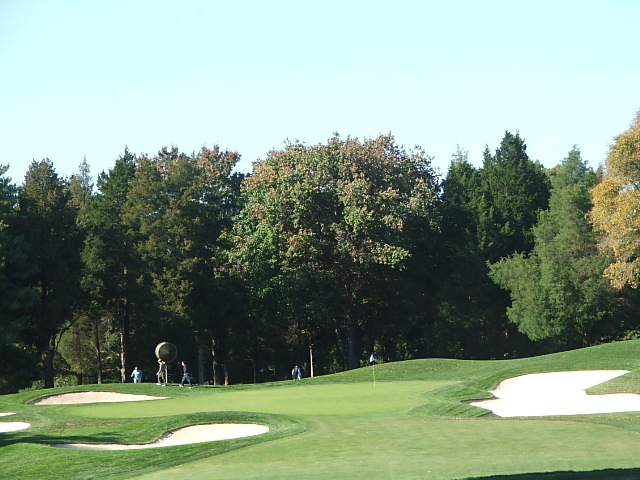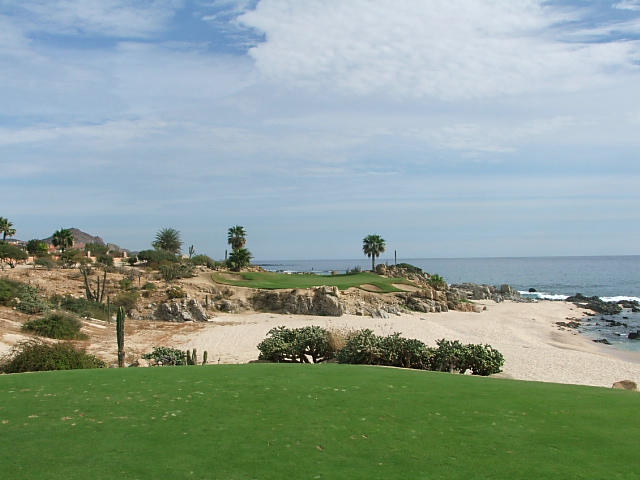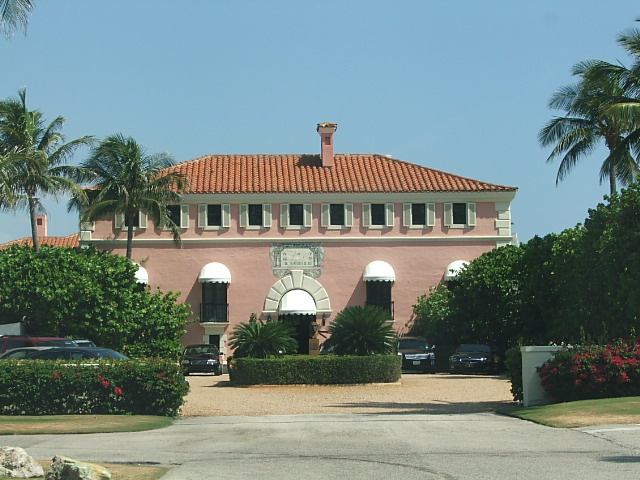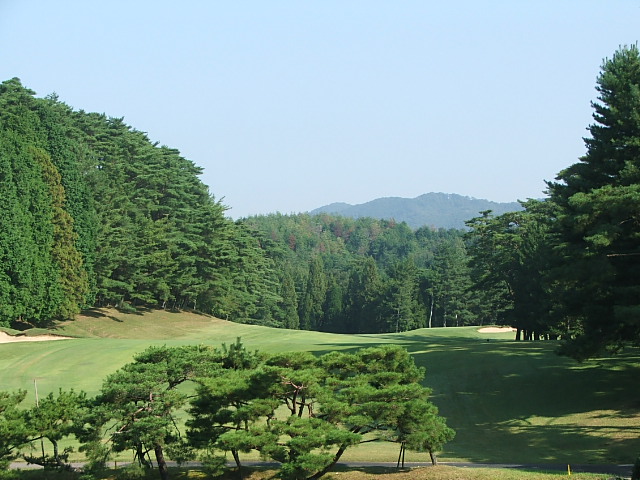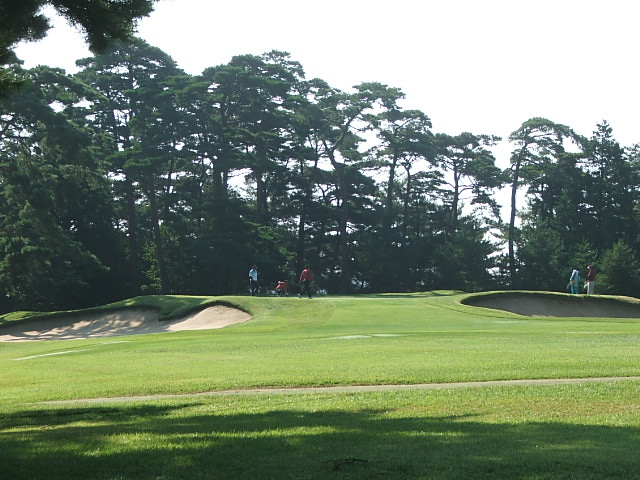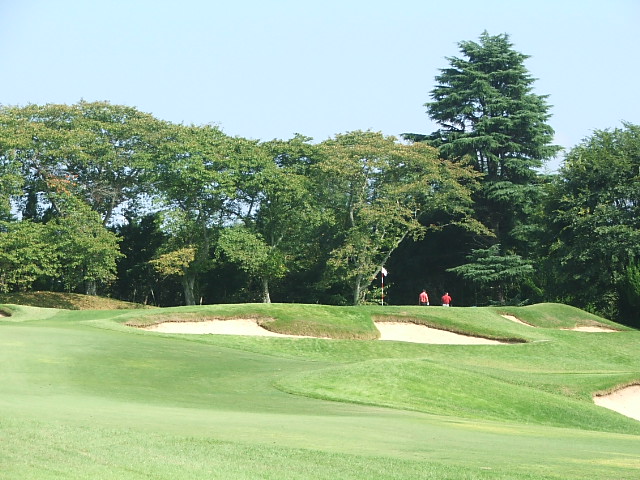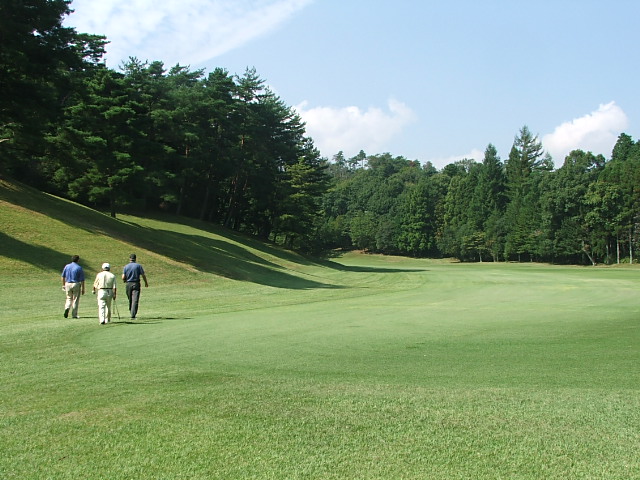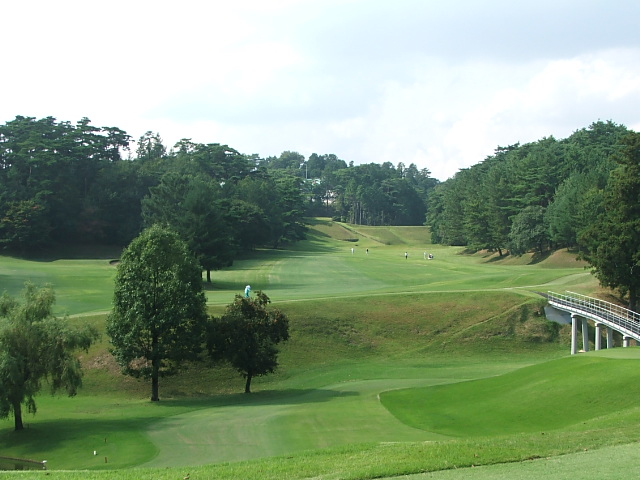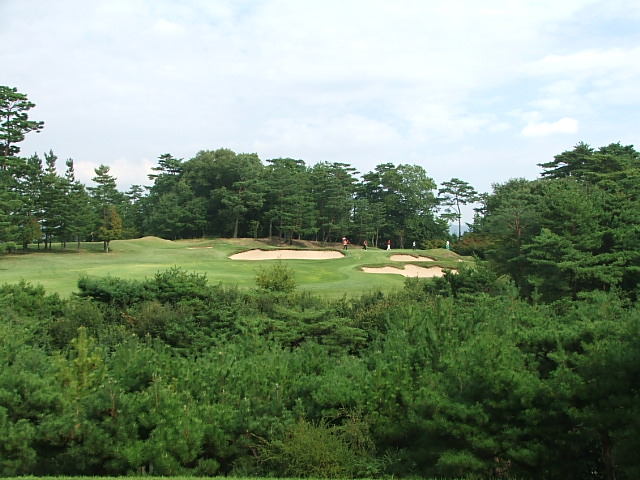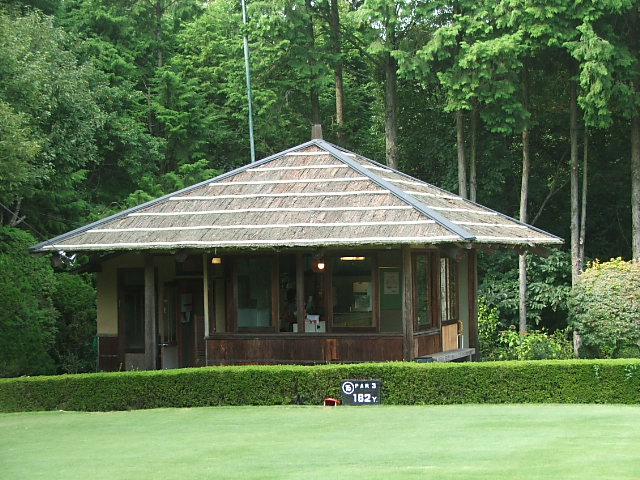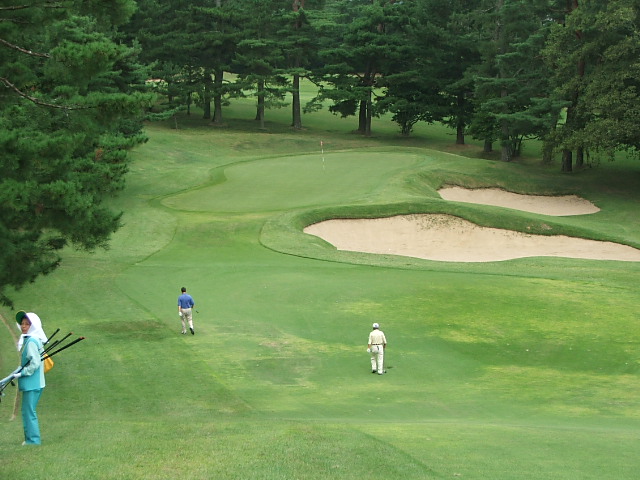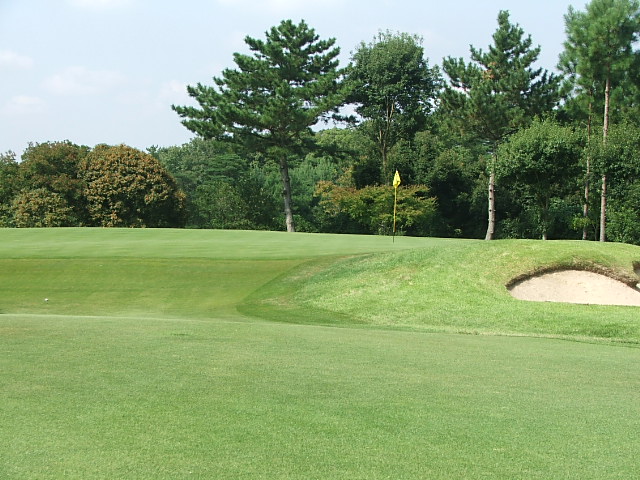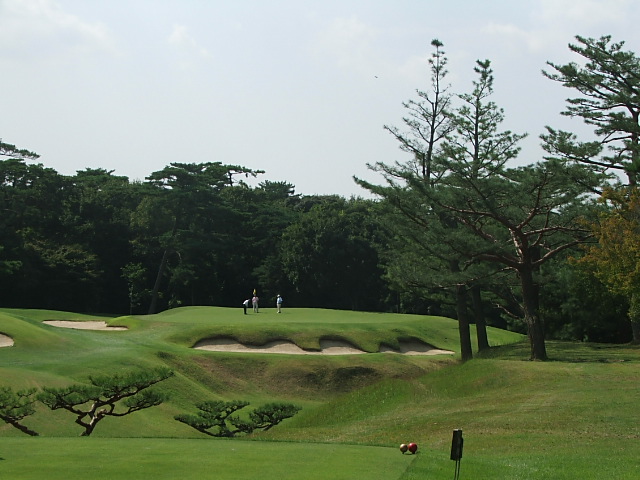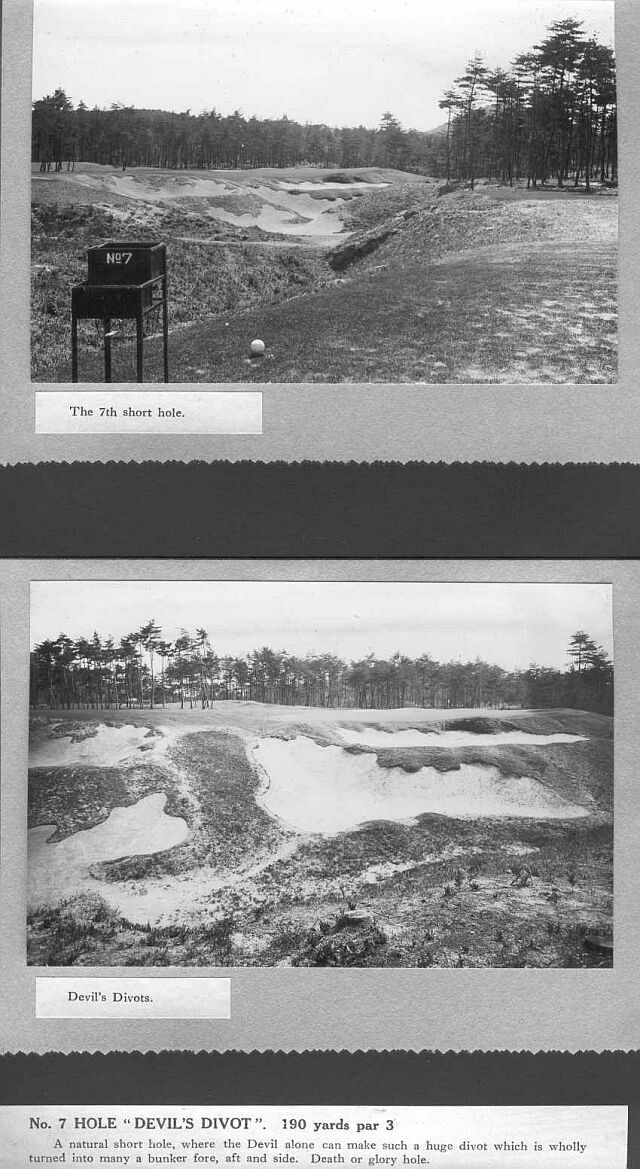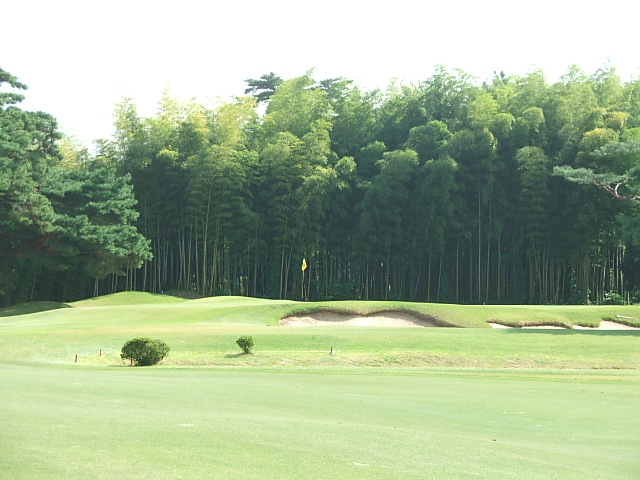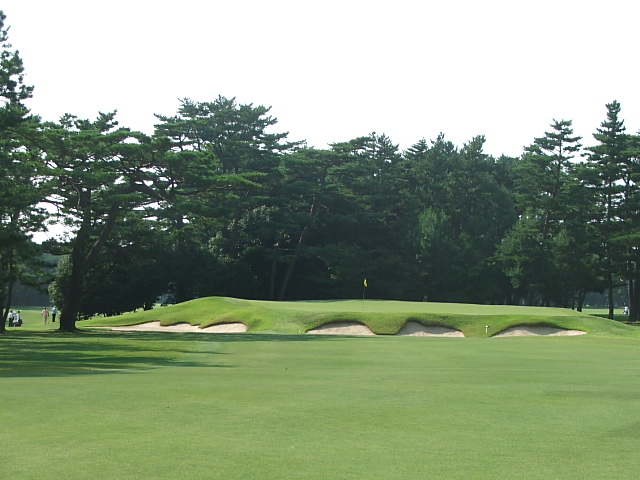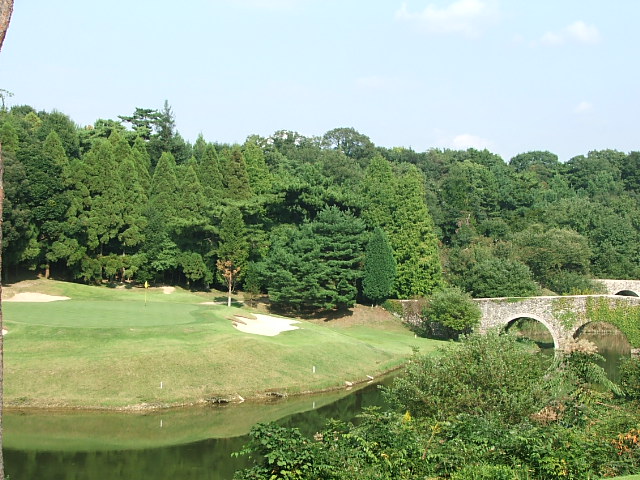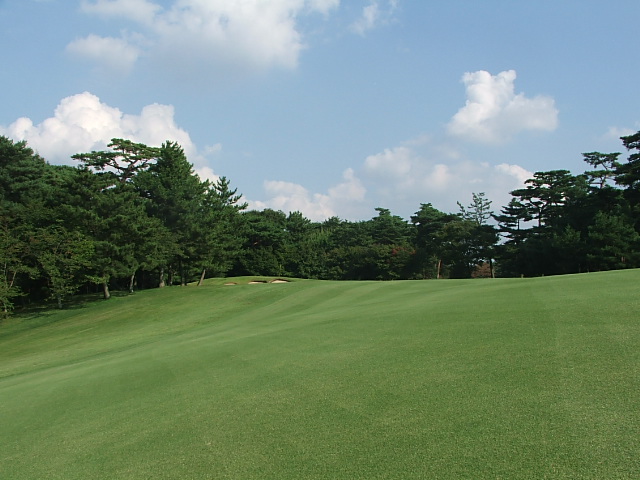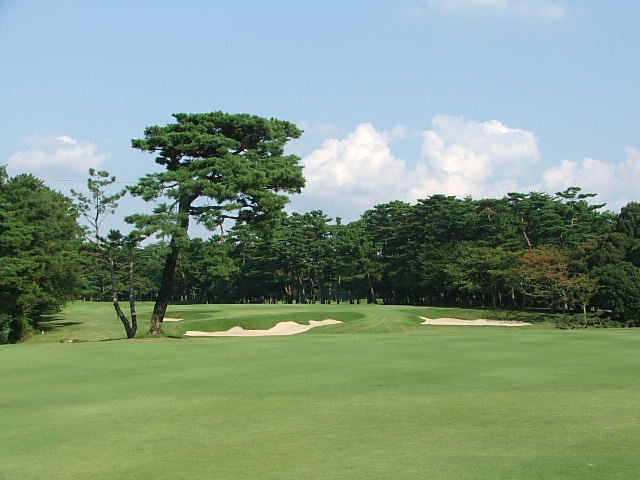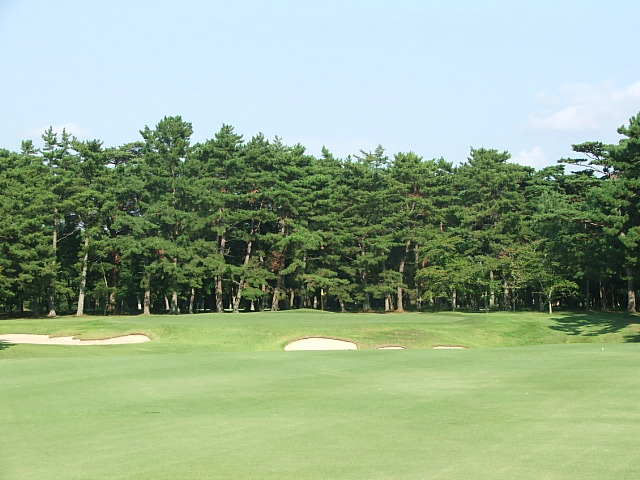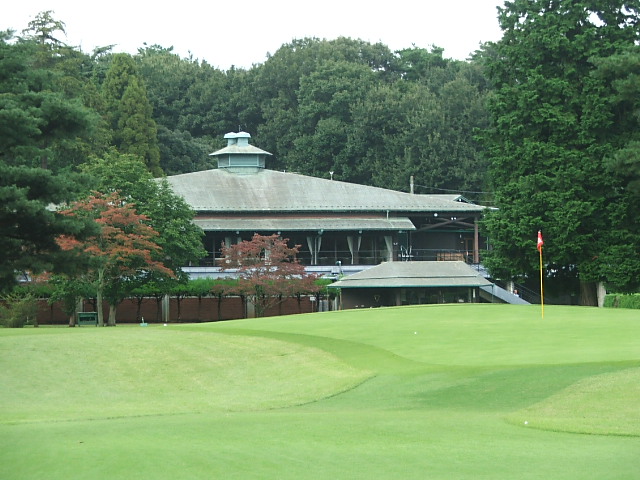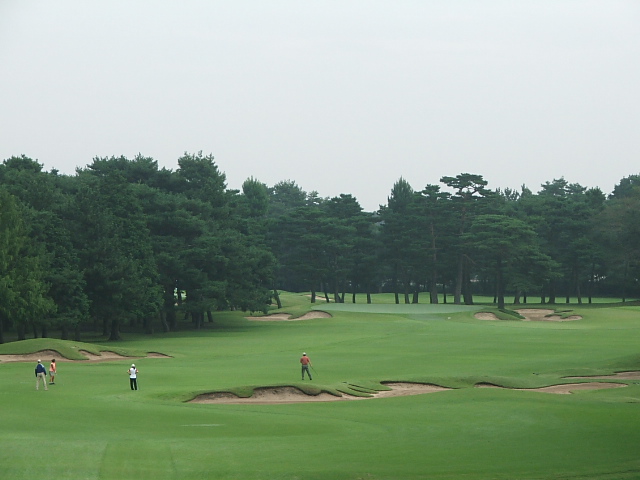Like many of our leading financial service firms today, the club went bankrupt in 1940. Between 1943 and 1946 the O.S.S., the pre-cursor organization to the C.I.A., rented Congressional for $4,000 per month and turned the club into a training center. The club was returned to private members after the war.
The course is located in Bethesda, Maryland, about thirty minutes from the U.S. Capitol Building. I took the train from New York to play Congressional. Arriving in Washington, D.C. by train never loses its luster. Union Station is one of the most elegant train stations in the United States and a pleasure to travel through. I love walking out the front entrance and glimpsing the beauty of the perfectly proportioned Capitol building. I know it sounds sappy but it is always an uplifting sight. I often picture myself as Jimmy Stewart in Mr. Smith Goes to Washington.

The distinctive tee markers at Congressional
The Golf Course
While the course is not exactly as hilly as Westchester Country Club or The Country Club at Brookline, the terrain and routing at Congressional reminded me of both these courses. The course has many irregular shaped fairways and doglegs, and greens that are very small. One of the keys to playing Congressional is to make sure that you approach the greens from the fairway. Attempting to hit and hold the green from any angle except the fairway is quite difficult here.
The fourth fairway at Congressional is typical of many on the course: narrow, with an irregular shape. This hole, like most at Congressional, plays from an elevated tee. On the front nine the 1st, 3rd, 4th, 5th, 6th, 8th and 9th all play from elevated tees.
4th fairway at Congressional
The fourth hole, the #1 handicap, is 427 yards long and doglegs to the right.
5th fairway at Congressional
The fifth hole was one of my favorites. Notice the nice rolling terrain, with the fairway following the contours of the land. This hole doglegs to the left and rewards the golfer who hits a tee shot far enough left to avoid the trap and opens up a better angle to the green.
Like almost all the greens at Congressional, the green on the fifth is small and well bunkered.
The sixth hole is a short par five at 488 yards that tempts the golfer to hit the green in two. The perils of being short are illustrated by the water hazard short of the green.
Par three 7th hole green at Congressional
The par three seventh hole plays 157 yards uphill, and the green, like many at Congressional, slopes front to back.
9th green at Congressional
The ninth, a 544 yard par five, is a very good hole with a big swale that you must carry to get from the fairway to the elevated green. The front of the green slopes back toward the fairway and repels balls down into the ravine. Club selection is made trickier here because from more than 130 yards out you are playing a blind shot, as the fairway rises gently from the middle of the hole toward the green.
The par three 10th green
The back nine begins with the 170 yard par three 10th, over water, to one of the largest greens on the course. You will notice the mechanical fan behind this green. Almost every green has them due to Congressional's hot and humid summers. Unfortunately, they do come into play if you miss the green, as I found out about on the first hole, and I didn't see any local rule allowing relief if you are behind one.
12th fairway at Congressional
It is difficult to tell how much of the course is the original Emmett design, but I could still see some features that reminded me of Emmett's masterpiece in Long Island, Garden City, such as the 12th hole, seen above. This type of slightly elevated rise from fairway to green is typical of Garden City. Many of the greens at Congressional are slightly elevated like this one with a narrow opening between the bunkers.
14th fairway looking backward
Another good example of the irregular shape of the fairways at Congressional, and a nice use of the hilly terrain, can be seen on the 408 yard fourteenth hole, above, looking back from the green.
You hit down into a landing area from an elevated tee and then the remainder of the hole rises to an elevated green.
The 17th green
The seventeenth is ranked as one of the top 500 holes in the world, and it is quite a tricky hole at 420 yards. The fairway drops down to another level about three-quarters of the way toward the green. The elevated green is small and well bunkered.
The 18th green
Both the 10th and 18th greens, modified by Rees Jones, seem a bit out of character with the rest of the course as their greens are surrounded by water and feels incongruent with the design.
I played Congressional on a brilliant but blustery day. As my readers know from my experience at Royal St. George's, a wind game is not the strongest part of my repertoire. I played Congressional in October of 2008, a month of bank runs and stock market crashes that I hoped I would never see in my lifetime. The Dow Jones average was as volatile as it has ever been. It had moves of more than 100 points on 20 of 23 days. Out of sympathy for the market I also had a move of more than 100 points for the day on my scorecard. My golf game experienced as much volatility as I can handle. I hope both the markets and my game calm themselves soon.


